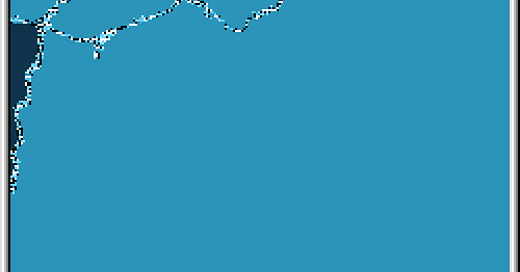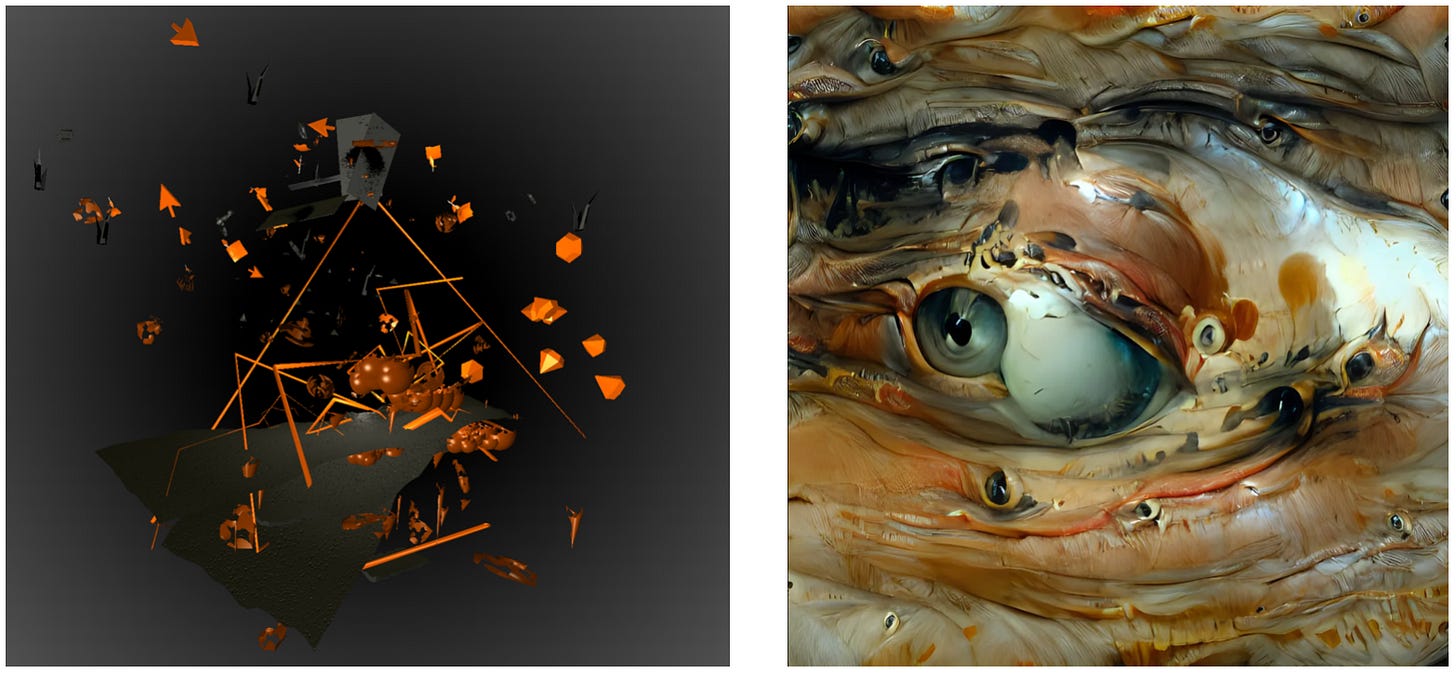I was fortunate enough to break my sacrum bone while ice skating with my daughter last week. A small price to pay for a precious memory. The silver lining? Plenty of time to write down some thoughts on digital art.
Did NFTs Revolutionize the Art Scene?
When NFTs burst into the public eye, they carried the promise of a grand shift—a future where artists had more power, more control, and more reward for their work. But revolutions rarely unfold as planned, and most digital artists would argue this one is still waiting to arrive.
What is certain is that NFTs changed something fundamental: how art is distributed, verified, and owned. They bypassed the old gatekeepers—galleries, auction houses—replacing trust with code, intermediaries with smart contracts. The result? A crack in the foundation of the traditional art world.
For a century, the art market moved in familiar rhythms. Artists sought the approval of institutions, collectors relied on galleries, and authenticity was certified by those who had long held the keys to the kingdom. Then came NFTs, and suddenly, an artist could sell directly to a collector. No gallery, no auction house, no middleman. The blockchain did the verifying, the network settled the payment. A collector needed only a wallet address to confirm what was authentic.
Canon in D: Macintosh Plus (@_deafbeef)
For the traditional art world, there was little incentive to embrace this new system. They couldn’t control it, they couldn’t profit from it, and so, predictably, they dismissed it. And that is precisely why NFT art is still waiting for approval from the old establishment. They called it a fad, a bubble, a playground for speculators and tech dreamers. And to some extent, they were right.
A Market Consumed by Speculation
What followed was a frenzy. NFTs became less about art and more about the speed of transactions and rising floor prices—who could buy, flip, and profit the fastest. Sales soared, peaking at $26 billion in 2021, eclipsing even Sotheby’s and Christie’s. But the new collectors weren’t old-world patrons who fell in love with a work and kept it for a lifetime. Many were traders, eyes fixed on price charts rather than digital brushstrokes. The traditional art world looked on in horror.
Now, in 2025, the dust has settled. NFT sales have collapsed, leaving many artists and collectors in disbelief. Those wondering why their work no longer sells as it once did may find the answer has little to do with artistic quality and everything to do with the nature of the buyers.
A New Challenge for NFT Art
You could argue that, at its core, the NFT space was always more about trading than artistic innovation. But that’s changing.
There’s another reason why NFT art struggles for adoption. As Mr. Pocobelli recently observed in one of his excellent podcasts: NFTs are art made on a laptop to be viewed on a laptop. They are not gallery art.
At first, this sounds trivial. But it’s not. It’s another crack in the foundation of the traditional art world—because what do you do with a masterpiece that doesn’t quite belong on a wall? Some brilliant curators and newly formed galleries have worked to bring digital art into physical spaces, creating valuable moments for people to gather and helping the NFT scene establish itself in the physical world. But the art itself often feels slightly out of place. The truth is, a laptop screen often remains the most natural environment for viewing NFT art.
The emergence of a new digital movement
Art history tells us that profound changes in art are never accidents. They come in response to profound changes in the world.
For nearly a thousand years, painting evolved in slow, deliberate steps, sometimes taking centuries for a new style to emerge. Artists focused on biblical stories, myths, landscapes, and the portraits of their patrons, refining techniques but rarely breaking from tradition.
Then, in the 19th century, everything changed. The arrival of photography shattered an unspoken assumption—that painting’s role was to depict the outside world. No longer confined to representation, their work turned inward—becoming a medium for exploring thoughts, emotions, and impressions. Within a few decades, the rigid conventions of representation shattered, giving rise to an explosion of new styles and artistic movements. Painters began to question the very essence of their craft—how color and form took shape using paint dots and brushes, how a canvas could be more than a window to the world, but a reflection of the mind itself. In a world where a machine could duplicate reality in an instant, art had to mean something more.
Aaefhinnorrrst A (Kim Asendorf)
Modernism broke with tradition, embracing innovation, abstraction, and new ways of seeing. It was a response to industrialization, technological progress, and a changing world.
Is something similar happening now?
It’s strange to think how long it took for something similar to happen in digital art. We’ve spent decades staring at screens—emailing, scrolling, gaming, streaming—without truly considering them as artistic free spaces. Only recently have we seen a wave of artists treating the screen itself, and the technology behind it, as a medium for pure expression and exploration.
Today, a big part of life—work, relationships, emotions—plays out through screens. Art that embraces digital techniques is not new, but what’s new is the freedom. Artists no longer have to think about how to translate their digital work into the gallery system. They don’t need a curator’s approval, a gallerist’s blessing, or a neatly printed portfolio in order to show their work. NFTs enabled this shift. Art can be made on a laptop, sold on a laptop, and collected and displayed on a laptop.
Places I need to see before I die (No Hygiene)
It sounds small, but it's radical.
These artists are breaking traditions in how art is made and sold. They are questioning what a digital image is, what a pixel represents, and what that says about us.
Decentralized networks and AI add yet another layer to the conversation.
Mass (James Bloom) and Full See (Botto)
Will this revolutionize the art world? That depends. The pieces are in place. The tools exist. The artists are already at work.
All that remains is for enough people to pay attention.









Great read Dagie! ‘21 cast such a long shadow I’m often wary about sharing my place in this movement even now, yet its the most exciting and supportive art community I’ve ever been a part of ✨